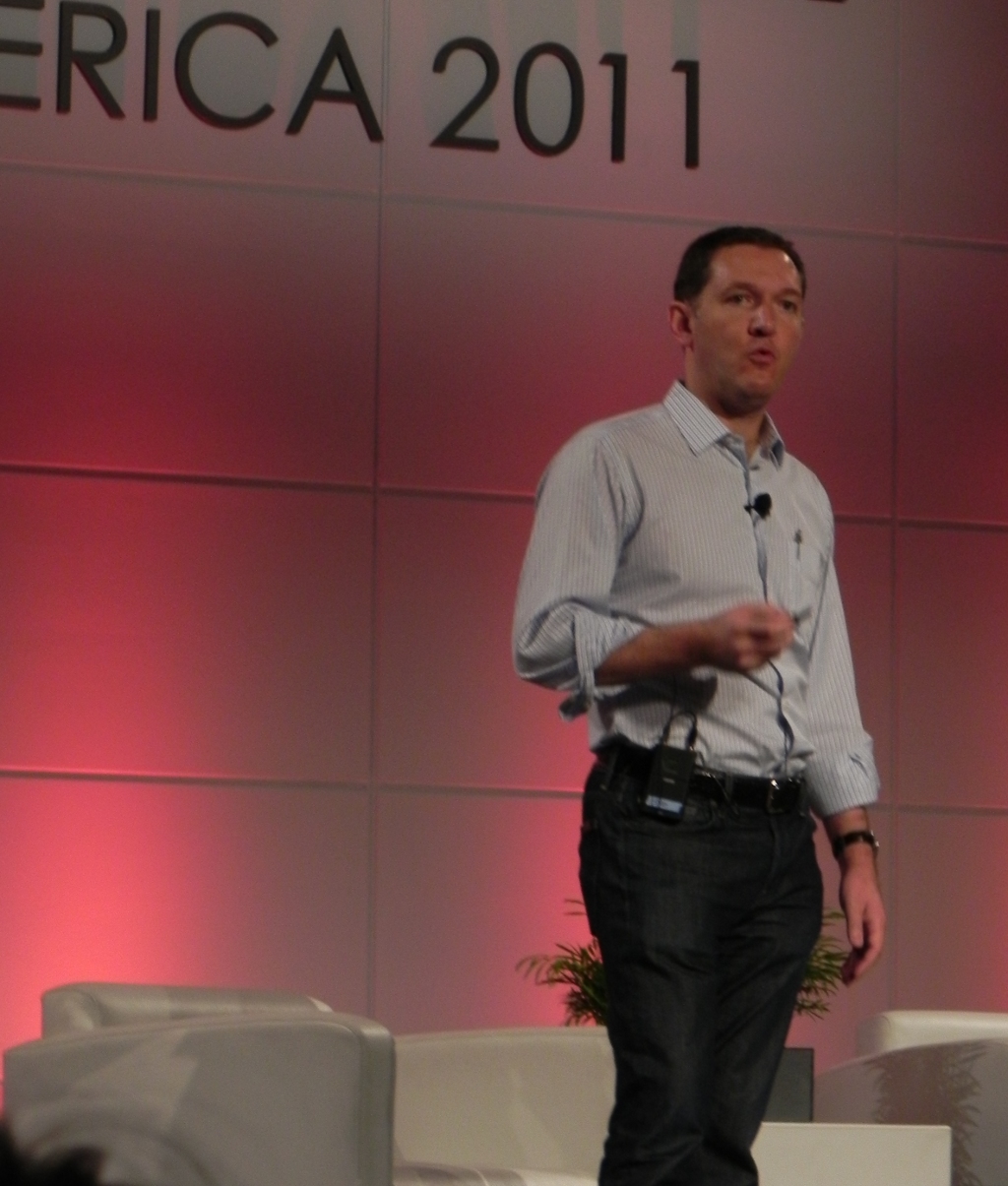Jim Whitehurst, CEO of Red Hat, took the stage in Vancouver, BC to talk about the challenges that Linux will face in the next 20 years. Whitehurst’s topic meshed nicely with the lead-in keynote from Jim Zemlin. While Zemlin examined the world without Linux, Whitehurst took a look at the next stage — Linux over the next 20 years.
 Maybe Zemlin had the easy one. Whitehurst says that his task was more daunting than Zemlin’s and that it’s easier to talk about history than to talk about the future… so that’s how he started, by talkin about the history of Linux, and his history with Linux. Whitehurst says that he has a long history with Linux, well before being hired by Red Hat. He started with Linux in the late 90s, with Slackware, and eventually moved to Fedora around 2005.
Maybe Zemlin had the easy one. Whitehurst says that his task was more daunting than Zemlin’s and that it’s easier to talk about history than to talk about the future… so that’s how he started, by talkin about the history of Linux, and his history with Linux. Whitehurst says that he has a long history with Linux, well before being hired by Red Hat. He started with Linux in the late 90s, with Slackware, and eventually moved to Fedora around 2005.
To predict the future, look at the past. Whitehurst looked at what made Linux successful so far and where it’s been successful. It’s great, says Whitehurst, at taking on legacy workloads and replacing UNIX and Windows. But it’s even better for new workloads. “If you’re spinning up a new workload, it’s going to be on Linux.”
New Workloads, New Businesses
The “fascinating” thing about Linux, says Whitehurst is not that it’s great technology — though he acknowledges that it is. The fascinating thing, though, is that it enables companies and developers to try new things. He mentioned that when he was with Delta, Linux was used to revamp its customer boarding process — something that wouldn’t have been able to prototype if it weren’t for Linux and open source allowing it to be done at almost no cost.
Facebook, Google, and the rest, says Whitehurst “only work if you can get them going cheaply.” According to Whitehurst, Facebook couldn’t have made it using Sun SPARC servers running Solaris at $10 a user. In fact, he says, most of Web 2.0 “would not exist” if it weren’t for Linux.
Unintended Consequences
Linux is no longer the challenger, says Whitehurst. It’s gone from catching up, to leading innovation. And everyone, or nearly everyone, is getting in on the act. When you’re looking at innovation, you’re looking at open source.
The next twenty years will be defined by unintended collaboration, says Whitehurst. The navy was worried about people shooting missles at them, he said, which led to real-time deterministic kernel features — which ultimately led to widespread financial use of Linux. Features that are good for dealing with missles turn out to be good for dealing with real-time trading as well.
Things like cloud computing, big data, and other areas are being driven by customer demand in open source, and then leading to new businesses.
Whitehurst says that, because of Linux, people are talking about using the principles of mass collaboration to solve problems. Pointing to the history of unintended collaboration, Whitehurst says that he has a “very unsatisfying answer” to the question of the next 20 years of Linux. “I have no idea.”
Linux, he says, is leading the way in the field of mass collaboration. “Certainly, Linux will be the default, but much more important is what it will do for society. I have no idea where it takes us, but I am thrilled to be a part of it.
While Whitehurst may provide an unsatisfying answer, it may be the only one that can be given from this vantage point. While many of us have believed in Linux and “world domination,” it would have been difficult to predict the particular type of world domination that Linux has achieved already. What’s sure is that Linux will serve as an enabler for features, technologies, and even industries that we can only imagine now.


